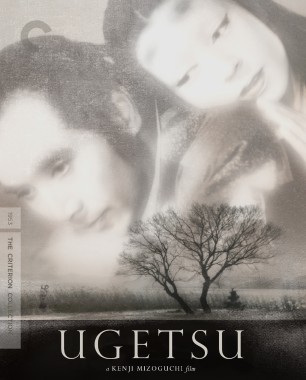A Story from Chikamatsu

One of a string of late-career masterworks made by Kenji Mizoguchi in the first half of the 1950s, A Story from Chikamatsu (a.k.a. The Crucified Lovers) is an exquisitely moving tale of forbidden love struggling to survive in the face of persecution. Based on a classic of eighteenth-century Japanese drama, the film traces the injustices that befall a Kyoto scroll maker’s wife and his apprentice after each is unfairly accused of wrongdoing. Bound by fate in an illicit, star-crossed romance, they go on the run in search of refuge from the punishment prescribed them: death. Shot in gorgeous, painterly style by master cinematographer Kazuo Miyagawa, this delicately delivered indictment of societal oppression was heralded by Akira Kurosawa as a “great masterpiece that could only have been made by Mizoguchi.”
A Story from Chikamatsu was restored by Kadokawa Corporation and The Film Foundation at Cineric, Inc., in New York, with sound by Audio Mechanics and the cooperation of The Japan Foundation. Special thanks to Masahiro Miyajima and Martin Scorsese for their consultation.
BLU-RAY SPECIAL EDITION FEATURES
- New 4K digital restoration, with uncompressed monaural soundtrack
- New interview with actor Kyoko Kagawa
- Mizoguchi: The Auteur Behind the “Metteur-en-scène,” a new illustrated audio essay by film scholar Dudley Andrew
- New English subtitle translation
- PLUS: An essay by film scholar Haden Guest
New cover by Michael Boland
BLU-RAY SPECIAL EDITION FEATURES
- New 4K digital restoration, with uncompressed monaural soundtrack
- New interview with actor Kyoko Kagawa
- Mizoguchi: The Auteur Behind the “Metteur-en-scène,” a new illustrated audio essay by film scholar Dudley Andrew
- New English subtitle translation
- PLUS: An essay by film scholar Haden Guest
New cover by Michael Boland

Cast
- Kazuo Hasegawa
- Mohei
- Kyoko Kagawa
- Osan
- Yoko Minamida
- Otama
- Eitaro Shindo
- Ishun
- Sakae Ozawa
- Sukeemon
- Ichiro Sugai
- Gembei
- Haruo Tanaka
- Doki
- Tatsuya Ishiguro
- Isan
- Chieko Naniwa
- Oko
Credits
- Director
- Kenji Mizoguchi
- Producer
- Masaichi Nagata
- Planning
- Hisaichi Tsuji
- Historical research
- Yoshi Ueno
- Screenplay by
- Yoshikata Yoda
- Adaptation by
- Matsutaro Kawaguchi
- Based on the puppet play Daikyoji mukashi-goyomi by
- Monzaemon Chikamatsu
- Director of photography
- Kazuo Miyagawa
- Editor
- Kanji Suganuma
- Art director
- Hiroshi Mizutani
- Music by
- Fumio Hayasaka
- Traditional music
- Tamezo Mochizuki
- Traditional music
- Enjiro Toyosawa
- Costumes
- Natsu Ito
- Makeup
- Masanori Kobayashi
- Hairstyles
- Ritsu Hanai
- Sound recording
- Iwao Otani
A scene from A Story from Chikamatsu














